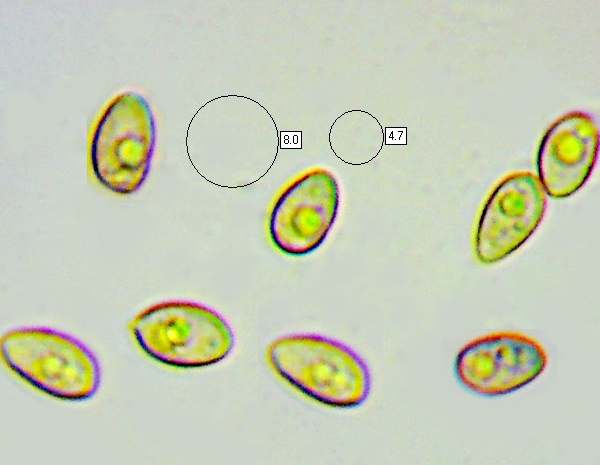Galerina graminea (Velen.) Kühner - Turf Bell
Phylum: Basidiomycota - Class: Agaricomycetes - Order: Agaricales - Family: Strophariaceae
Distribution - Taxonomic History - Etymology - Toxicity - Identification - Reference Sources
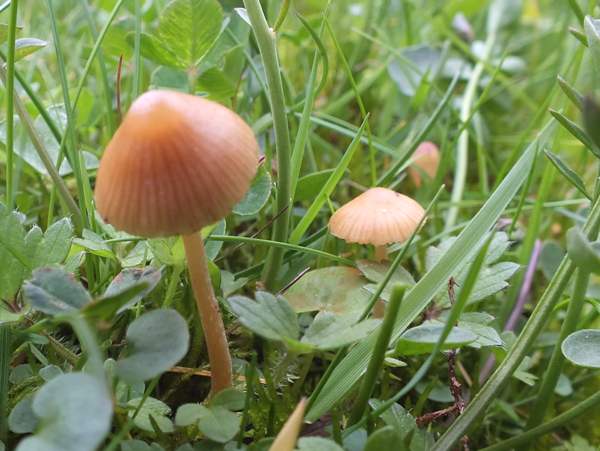
Galerina graminea, with its widely-spaced gills and tiny orange caps, is a common and very welcome sight in garden lawns and parks. This is one of the very few Galerina species that can survive in moss-free grass, although it is much more commonly encountered in mossy lawns.
Identifying with certainty the many small Galerina and Mycena mushrooms that appear on lawns requires microscopic examination (preferably assisted by chemical testing!).
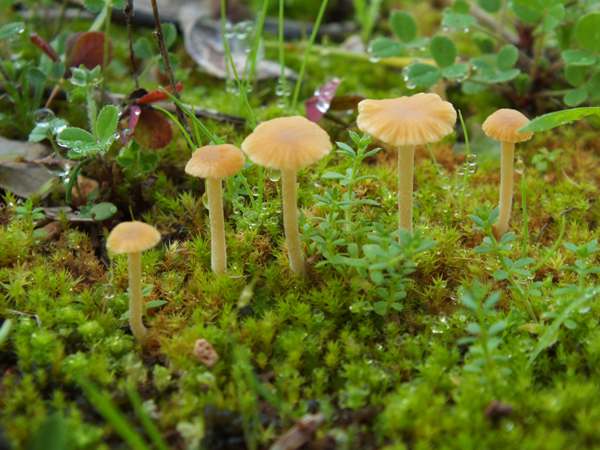
Distribution
Galerina graminea is a fairly common sight on lime-rich lawns and parkland in Britain and Ireland but infrequent in neutral and acidic areas. This species is also recorded throughout most of mainland Europe and in North America.
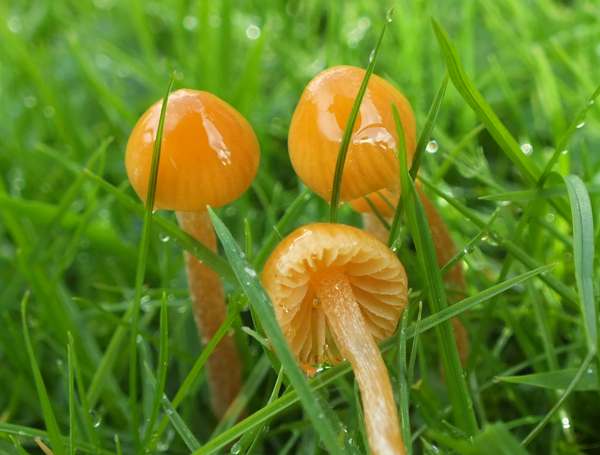
Taxonomic history
This attractive little mushroom was for many years better known by the scientific name Galerina laevis, which was derived from names proposed by Christiaan Hendrik Persoon - Galeria laevis and Agaricus laevis. The basionym was established in 1921 when Czech mycologist Josef Velenovský (1858 - 1949) described this species and gave it the name Galera graminea. It was the German mycologist Robert Kühner (1903 - 1996) who transferred this species to the genus Galerina, thus establishing its currently-accepted binomial name Galerina graminea.
Synonyms of Galerina graminea include Agaricus laevis Pers., Galera graminea Velen., and Galerina laevis Singer.
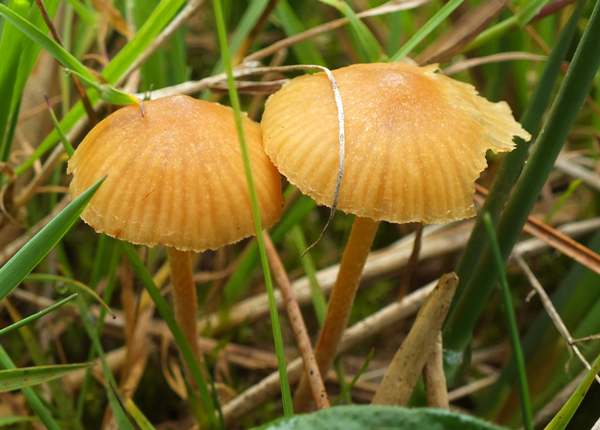
Etymology
Galerina means 'like a helmet', while the specific epithet graminea means 'of grass' - an appropriate epithet for this little grassland mushroom.
Toxicity
Galerina graminea is described in many field guides as inedible or suspect. In view of the fact that other fungi in this genus are known to be toxic toadstools - for example Galerina marginata contains deadly poisonous amatoxins which are the same kinds of substances that make Amanita phalloides, the Death Cap, so dangerous - this species should not be collected for eating. It is unlikely that anyone would want to hunt for such insubstantial and uncommon little fungi for food, but they could easily be gathered by mistake when collecting Marasmius oreades (Fairy Ring Champignons) which grow in the same habitats. This again emphasises the importance of checking every single specimen that is gathered to eat.
Identification guide
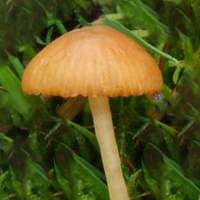 |
CapInitially convex then bell-shaped or slightly umbonate with a striate margin; orange; 5 to 15mm in diameter when fully expanded. |
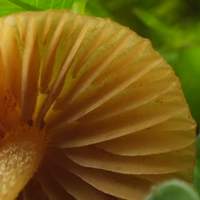 |
GillsWidely spaced. orange; adnexed, sometimes almost free. Stem1 to 2mm in diameter and 2 to 5cm tall; cylindrical, paler orange than the cap. |
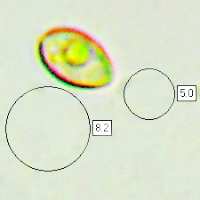 |
SporesEllipsoidal, 7-9.5 x 4-5μm; smooth or finely warty.
Spore printBrown. |
Odour/taste |
Odour not significant; taste faintly bitter. |
Habitat & Ecological role |
On grassy ground in coniferous and deciduous woods and in short-cropped or mown grassland, most often on calcium-rich soil. |
Season |
June to December in Britain and Ireland. |
Similar species |
Kuehneromyces mutabilis, a much larger mushroom, is similar in colour range but has a pale cap centre and a darker margin; it does not grow in grass but is confined to mainly hardwood substrates. |
Reference Sources
Fascinated by Fungi, 2nd Edition, Pat O'Reilly 2016, reprinted by Coch-y-bonddu Books in 2022.
Dictionary of the Fungi; Paul M. Kirk, Paul F. Cannon, David W. Minter and J. A. Stalpers; CABI, 2008
Taxonomic history and synonym information on these pages is drawn from many sources but in particular from the British Mycological Society's GB Checklist of Fungi.
Fascinated by Fungi. Back by popular demand, Pat O'Reilly's best-selling 450-page hardback book is available now. The latest second edition was republished with a sparkling new cover design in September 2022 by Coch-y-Bonddu Books. Full details and copies are available from the publisher's online bookshop...

